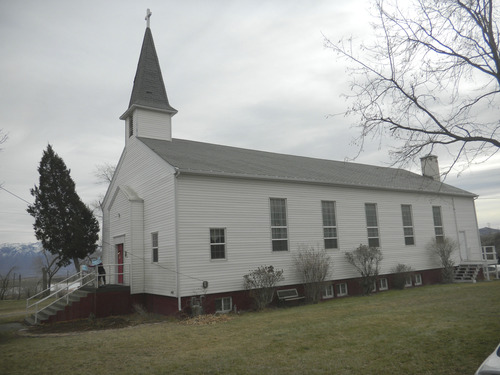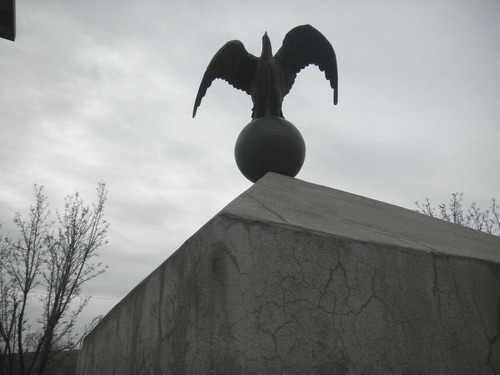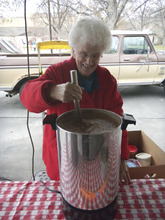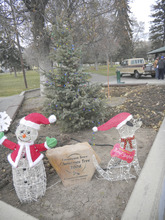This is an archived article that was published on sltrib.com in 2013, and information in the article may be outdated. It is provided only for personal research purposes and may not be reprinted.
Copperton • Driving up to what's left of Bingham Canyon on the edge of the gigantic Kennecott Copper Mine brings back many pleasurable memories.
When attorney Ron Yengich, whose family once lived in Bingham Canyon before the mine swallowed up their home, invited me to an annual run in the historic town of Copperton, I jumped at the chance. The run honors Ron's late brother Nick, who I once worked with as a sports writer, and Gerald Enniss, who served as a juvenile judge in Draper, and raises money for cancer victims.
I love Copperton, once a company mining town and now a clean little community of 826 residents.
My father earned his first job as a Jordan School District principal at Copperton Elementary School in the early 1960s. The school, closed in the 1970s and torn down to make room for mining operations, was located across the street from the beautiful town park where runners gathered. Dad loved school PTA meetings in the ethnically diverse town. Tradition had it that those meetings were often potluck dinners, where food from a dozen different countries would be served.
The school proved idyllic for my younger brother and me. We could play tennis or basketball at the park, use the playground or try to catch lizards, which seemed to be plentiful along the railroad tracks. Dad introduced me to high school sports by driving us up to the old Bingham High located on the north end of Copperton, in the dead of winter. There, we watched Miner stars such as Jim Jimas and Randy Schouten play in the tiny bandbox gym inside the historic school.
When I began my high school sports writing career in the early 1970s, Bruce Hardy starred for Bingham. Though he led the Miners to a state basketball title, I remember him more as a football player. I loved making the drive to Bingham, whose field was one of the few that had lights in those days. A photo of Hardy standing in his Miner football uniform on the Bingham Highway graced the cover of the April 29, 1974 Sports Illustrated magazine, that declared him the "Best Schoolboy Athlete."
"Bruce Hardy might have been dreamed up, along with his cereal-box name, to remind the world what an old-fashioned high school hero looks like," wrote Sports Illustrated's Jerry Kirshenbaum. "He might have descended on Bingham, Utah, appearing in the narrow canyon in the chalk-colored Oquirrh Mountains as in a vision. Somehow it all seems too perfect that Bruce Hardy should throw touchdown passes and hit home runs on playing fields carved out of hillsides; that he should do wondrous things with a basketball in a dim, splintered bandbox of a gym; that Utah's sportswriters should hymn the praises of 'Bruce Hardy and the Mountain Men.'"
Alas, that incarnation of Bingham High, a school that originally opened in the now-gone town of Bingham in 1908, according to writer Scott Crump in his onlineutah.com story on the history of Copperton. It closed the next year when a new Bingham opened in South Jordan.
Crump wrote that Copperton was designed as a company town with the first 18 homes being rented to mining families in 1926. The town included different designs for homes, a fact that can be seen today in the well-kept little houses, many lovingly decorated for Christmas.
Cal Crump, a former coach at Bingham who still lives on Cyprus Street in Copperton and often wears a BHS Alumni Foundation hat, was delighted when many of the old historic trophies were moved to the old school.
Alas, after serving as a junior high school, the old high school eventually closed, was torn down and is now a vacant lot. Only a large "B" on the hillside and a lone set of stairs leading up to what was the football field remain.
Though still a beautiful little town that time seems to have forgotten, Copperton is devoid of almost any commercial business. The Spanky Mart is boarded up. There is a credit union, a post office, three historic churches and a Lions Club building, but residents have to purchase their gas and groceries elsewhere.
It survives in the hearts of people such as Cal Crump or Erma Yengich, who stirred hot chocolate for runners. It is a reminder of a different era in Salt Lake County and one that survives with the obvious pride of the residents who make it their home.
Twitter @tribtomwharton









